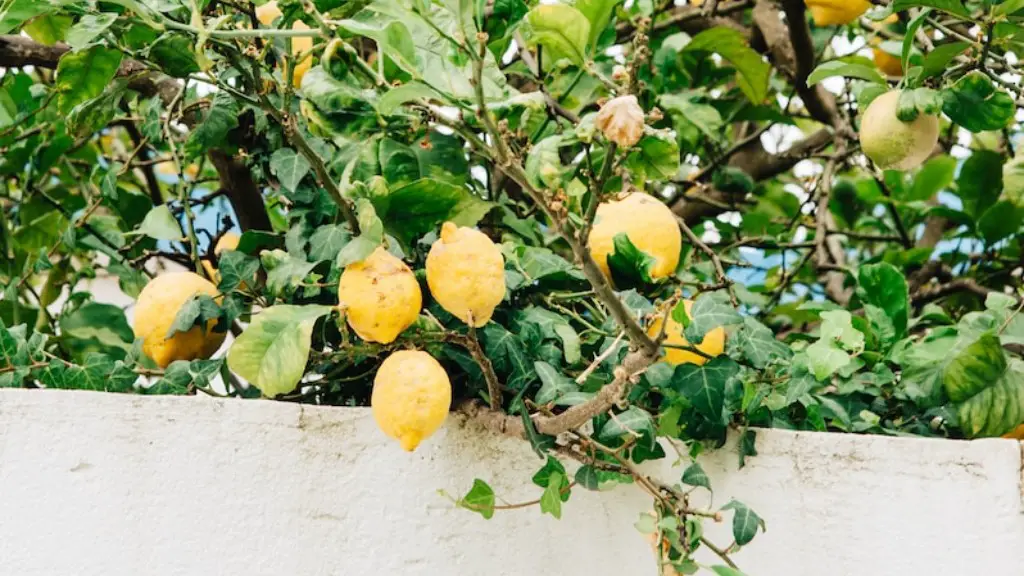How to Repot an Apple Tree
Repotting an apple tree is an important part of its maintenance that should be done every few years. It is a process that will require some time, effort and basic knowledge, however, it is not a difficult task as long as you have the necessary tools and materials. Here’s a brief overview of how to repot an apple tree.
Firstly, gather the necessary supplies, such as a potting mix, a pair of secateurs, water and soil amendments. This is the best time to give your tree some TLC – soil amendments such as compost, manure, lime or pumice can add many essential nutrients to the soil.
Next, prepare the area for the repotting process. You’ll want to create a level surface on which to place the tree, and water the area to ensure the soil is moist.
Now, carefully remove the tree from its original pot, taking care to avoid damaging its roots. Then, use secateurs to trim off any damaged or diseased roots.
Place the tree in the new pot, making sure to add the potting mix to the area surrounding the roots. Gently firm the soil with your hands to ensure the roots are securely held in place.
Finally, add water to the new pot, and use stakes and ties to secure the tree in its new pot. Regularly inspect the tree over the coming weeks to ensure it is doing well, and water it regularly before it becomes dehydrated.
Taking Care of the Tree After Repotting
Now that you have repotted your apple tree, it is time to ensure that it survives and flourishes in its new environment. Here are some tips to keep your tree healthy in its new abode.
Firstly, ensure that the tree is getting plenty of sunlight and water. Apples require at least six hours of direct sunlight per day, and should be watered whenever the soil becomes dry – about once a week.
It is also important to mulch the area around the tree in order to lock in moisture. This will also discourage weed growth and reduce the likelihood of pests infesting the tree.
Fertilizer is also important in order to provide the tree with additional nutrients. An organic fertilizer such as compost or manure can be applied twice a year – once in the spring and once in the fall. However, be sure to read the instructions on the fertilizer package, as over-fertilizing can do just as much damage as under-fertilizing!
Finally, it is important to prune your tree regularly in order to keep it healthy and encourage new growth. Pruning should be done in late winter and early spring before the tree starts to bloom. This will ensure that all of the deadwood is removed and that the tree is able to grow properly.
Supporting Your Tree’s Health
Giving your tree additional support can be an important part of keeping it healthy and ensuring it grows strong. Here are some ideas for providing your tree with the best possible environment.
Using an organic weed control product is an effective way to keep weed growth to a minimum. This will make sure that the weeds do not compete with the tree for resources and also prevent the weeds from taking over the area.
Maintaining good soil health is essential for a healthy tree. This can be done by adding organic matter such as compost or manure and improving the soil structure. Mulching the area around the root zone can also help to keep weeds away and the soil temperature constant.
Using an insect control product can be a great way to protect your tree from unwanted pests. This is especially important if you live in an area where pests are common. Taking the time to inspect your tree regularly for signs of insect infestation can help you catch an infestation before it gets out of hand.
Finally, it is important to make sure that the tree is not subject to any physical damage. This can include anything from the tree being hit by a vehicle or lawnmower, to animals such as rodents digging up the roots. Taking steps to protect your tree from physical damage can go a long way in keeping it healthy and happy.
Dealing With Diseases
Even with the best care in the world, it is possible that an apple tree can become infected with a disease. Being proactive in fighting diseases such as apple scab, cedar apple rust and fire blight can help to protect the tree. This can be done by pruning out any infected branches and making sure that it is not subject to any environmental stress, such as excessive water or cold temperatures.
Using a fungicide is also an effective way to combat diseases. However, be sure to read the instructions on the package carefully and only use the recommended dosage. Applying too much of a fungicide can be just as damaging as not using one at all.
Finally, paying attention to the health of the tree and keeping an eye out for any signs of disease or pest infestation is one of the most important things you can do. If you notice any suspicious symptoms, such as yellowing leaves or distorted growth, take the time to inspect your tree and then take steps to treat the issue as quickly as possible.
Conclusion
Repotting an apple tree is a relatively easy process, with the right tools and materials. Taking good care of the tree afterwards, providing support where necessary and dealing with diseases can all help to ensure your tree is happy and healthy. With some patience and dedication, you can have a thriving apple tree that will bear fruit for many years to come.





